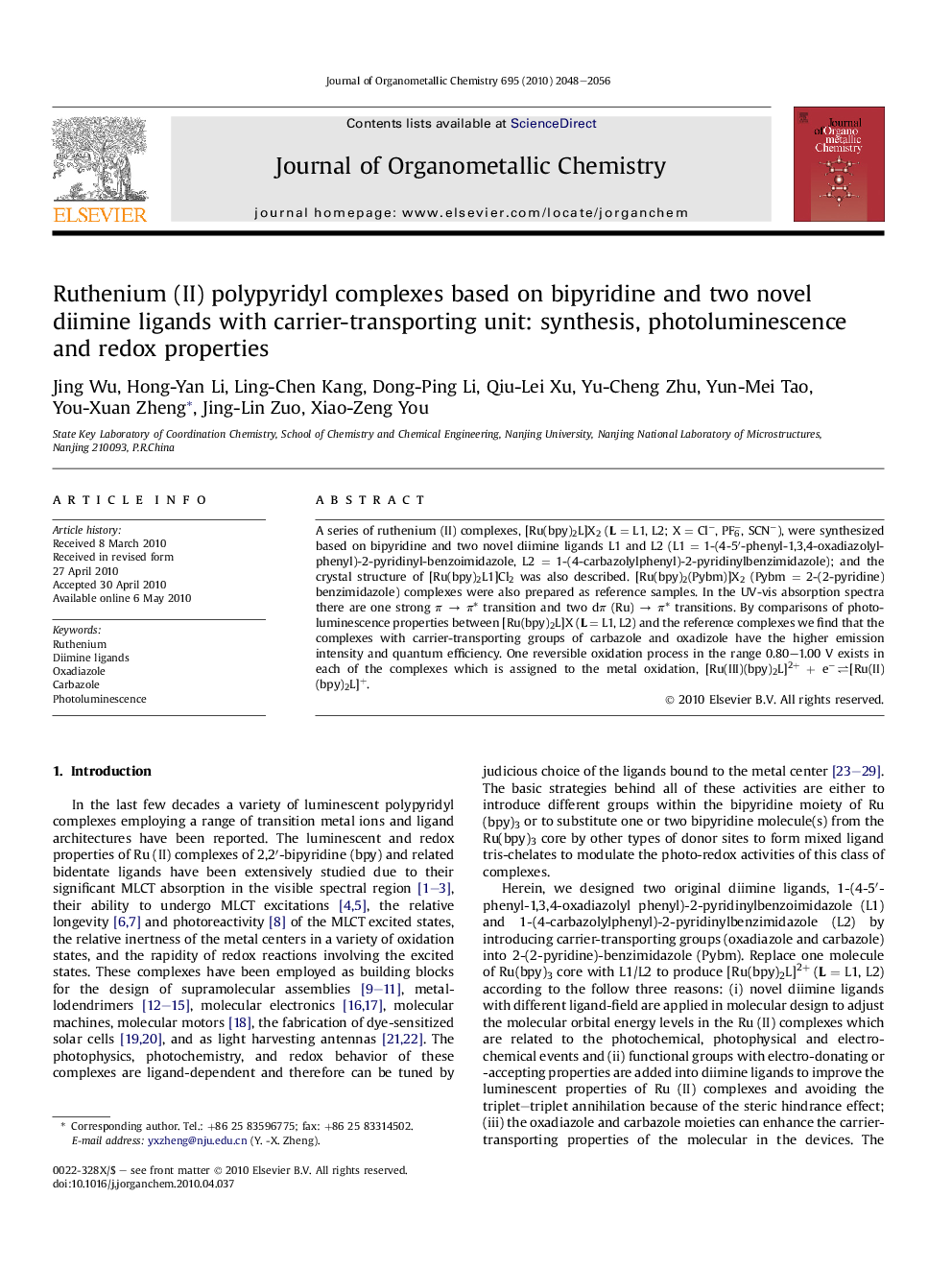| Article ID | Journal | Published Year | Pages | File Type |
|---|---|---|---|---|
| 1326950 | Journal of Organometallic Chemistry | 2010 | 9 Pages |
A series of ruthenium (II) complexes, [Ru(bpy)2L]X2 (L = L1, L2; X = Cl−, PF6−, SCN−), were synthesized based on bipyridine and two novel diimine ligands L1 and L2 (L1 = 1-(4-5′-phenyl-1,3,4-oxadiazolylphenyl)-2-pyridinyl-benzoimidazole, L2 = 1-(4-carbazolylphenyl)-2-pyridinylbenzimidazole); and the crystal structure of [Ru(bpy)2L1]Cl2 was also described. [Ru(bpy)2(Pybm)]X2 (Pybm = 2-(2-pyridine)benzimidazole) complexes were also prepared as reference samples. In the UV-vis absorption spectra there are one strong π → π* transition and two dπ (Ru) → π* transitions. By comparisons of photoluminescence properties between [Ru(bpy)2L]X (L = L1, L2) and the reference complexes we find that the complexes with carrier-transporting groups of carbazole and oxadizole have the higher emission intensity and quantum efficiency. One reversible oxidation process in the range 0.80–1.00 V exists in each of the complexes which is assigned to the metal oxidation, [Ru(III)(bpy)2L]2+ + e−⇌⇌[Ru(II)(bpy)2L]+.
Graphical abstractThe comparisons of PL and quantum efficiency between the [Ru(bpy)2L]X2 (L = L1 (1-(4-5′-phenyl-1,3,4-oxadiazolylphenyl)-2-pyridinyl-benzoimidazole), L2 (1-(4-carbazolylphenyl)-2-pyridinylbenzimidazole), X = Cl−, PF6−, SCN−) and [Ru(bpy)2(Pybm)]X2 (X = Cl−, PF6−, SCN−) suggest these ligands containing carrier-transporting groups are more benefit to the luminescence of the ruthenium (II) complexes than the based starting ligand (Pybm) due to the more rigid structure and more efficient shielding of the Ru (II) core towards external quenching.Figure optionsDownload full-size imageDownload as PowerPoint slide
